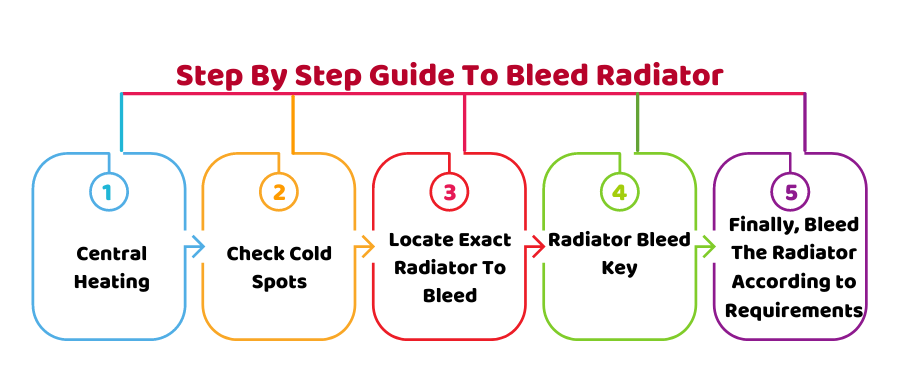House maintenance jobs such as changing bulbs, tightening screws, or bleeding a radiator are easy only when you know how to do them properly. This happens only when the tenants own the rented house just like their own house.
The basic knowledge to know how to bleed radiators and use tools can help you reach the required level as a responsible tenant. Save your budget and energies from reaching out to mechanics for house maintenance and feel independent.
What Is a Bleeding Radiator?
The air trapped in your heating system needs to be released, releasing the air means bleeding the radiator. The question that arises here is why this trapped air needs to be released? Actually, this trapped air hinders the process of heating and for regaining efficacy of heating it is a must to bleed the radiator. Also, it protects you from paying increased bills.
How to bleed radiators? It is easy if you follow the steps listed below you. I hope these few minutes of reading will help you to maintain a cozy home, save money and move freely without being worried about your heating system.
- Central Heating
- Check Cold Spots
- Locate Exact Radiator To Bleed
- Radiator Bleed Key
- Finally, Bleed the Radiator according to requirement.
Still Confused, Do Reach Out to Accotax for further Information and get benefits of the ultimate guide.
Step By Step Guide to Bleed Radiator:
These easy steps will help to fix your problem and know how to bleed a radiator, turn your radiator noise-free and hot piping instantly. All you need to get it done is listed below:
- Radiator Bleed Key
- Cover to control water leakage
- A container to place under the radiator in case it is leaking.
Note: The time required to fix your radiator is around 20 mins but in case more than one radiator is bleeding, it will take longer than that.
Let’s get started:
Step 1: Turn On Central Heating
Your radiators are required to reach the maximum level of heat before you start mending it. So, turn on your heating system and wait until it reaches the required level.
Step 2: Locate Cold Spots
This step needs to be done with great focus and vigilance to rectify the problem. The point is to locate where exactly the radiator needs bleeding. For the right mending, you need to move your hand over the radiators and locate where you find the cold area. Now that you know the cold areas, this will help you to know where the working of bleeding will be required.
Step 3: Locate First Radiator to Bleed
After you successfully locate the radiators that need bleeding, switch off the heating system and it cools down completely. Meanwhile, look for the first radiator from which you are going to start bleeding. It will help to give you smooth processing.
Step 4: Radiator Bleed Key
There is usually a metal bleed valve placed on the top or side of radiators. The placing of the valve may vary according to the structure of your radiator. It is kind of a metallic screw that is wrapped in a nut.
Before you start, place any container or a towel under your radiator to avoid a mess of discolored water.
Looking for a Low Budget house on rent in the UK, our Consultants can help you to gather the right information!
Step 5: Finally, Bleed the Radiator
The next step is to insert the radiator key very carefully in the valve that needs bleeding and lock them together. Follow the listed guide to move the key in the right way.
- Once you move the key anti-clockwise, it will open the valve.
- A hissing sound will ensure that the air is released.
- Don’t open the valve fully and save yourself from water coming out swiftly.
Now that there is no hissing sound coming, it’s a clue that the air is fully released. The water dripping indicated that the air was successfully bled out from the radiator. Move the key clockwise to close and ensure not to close too tightly or it may cause further damage.
The same process will be repeated to bleed all the radiators that you located with cold spots. To ensure that the process is done right, check the boiling pressure that should drop due to bleeding in the radiator.
Conclusion:
To sum up the discussion we can say that to know how to bleed a radiator is simpler than to do it in the right way. Before you go easy, check on your heating system to ensure if the problem is actually fixed. Give full heating time to your system to recheck the cold spots. However, if you still find cold spots repeat the process. We hope this post proves to be advantageous to know how to bleed a radiator and to meet your responsibilities as a tenant.
To value your business as a property owner, talk to our professionals for instant services!






















































